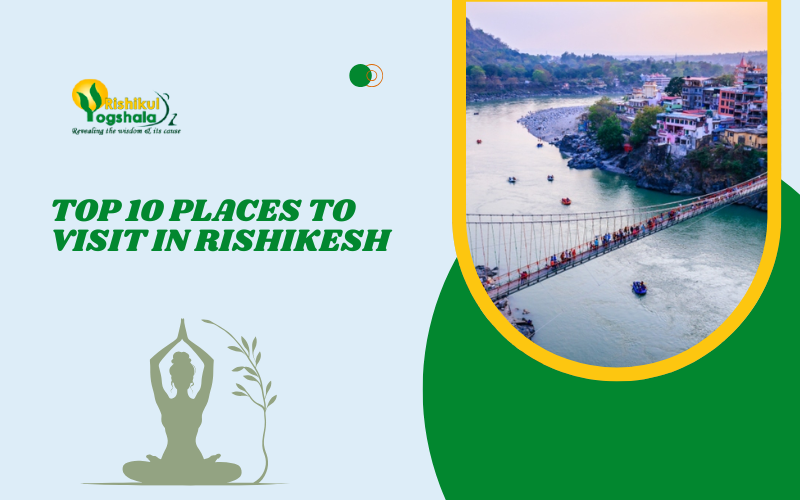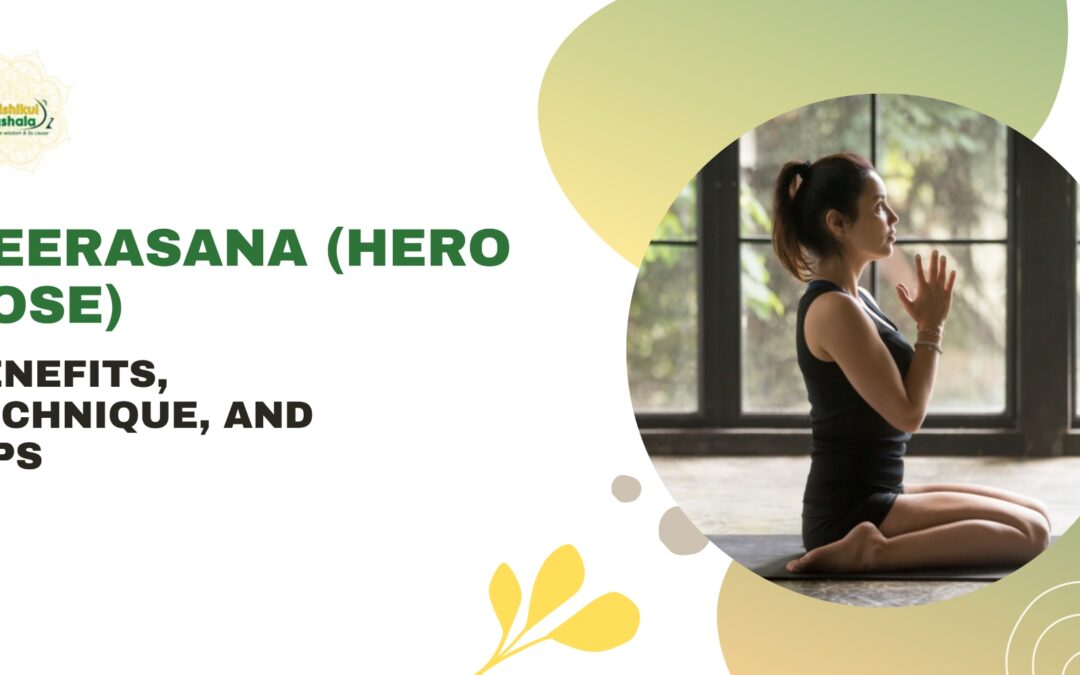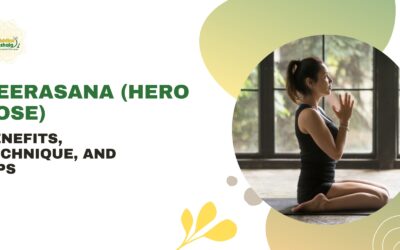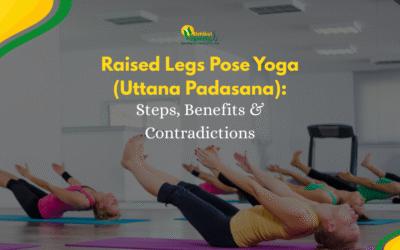What Is Akarna Dhanurasana (Archer’s Pose)?
Akarna Dhanurasana yoga is one of the most powerful seated yoga poses. It is also known as the Archer’s Pose because it imitates the posture of an archer pulling a bow. Although this pose is not as familiar as other yoga poses, its uniqueness offers fantastic benefits that make it worth including in your routine. Mainly, Archer’s Pose enhances body flexibility, strengthens the legs and back, and improves concentration.
Let’s understand the meaning and origin of Akarna Dhanurasana yoga.
The name “Akarna Dhanurasana” comes from a Sanskrit text, Haṭhābhyāsapaddhati.
- “A” indicates “towards”.
- “Karna” points to “ear”.
- “Dhanur” suggests “bow,” as in archery.
- “Asana” means “pose”.
After understanding the meaning of the Akarna Dhanurasana pose, we can easily imagine an archer pulling a bowstring toward the ear. This advanced type of yoga posture mainly requires flexibility in the hips, hamstrings, and whole shoulders.
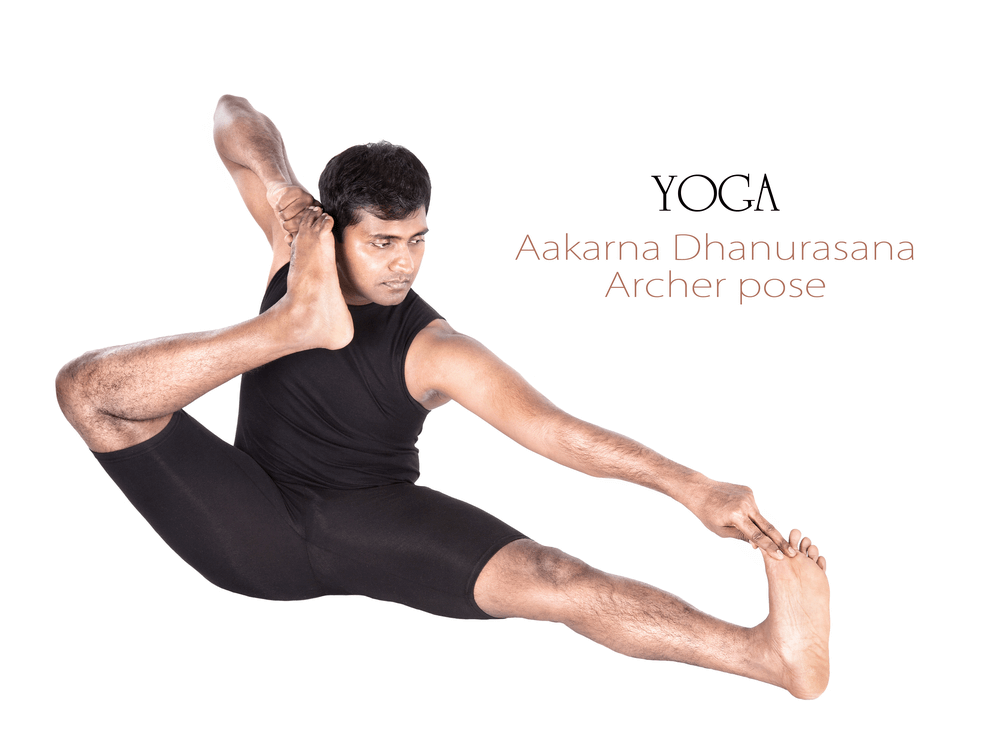
5 Powerful Benefits of Archer’s Pose (Akarna Dhanurasana)
You need to understand that Akarna Dhanurasana is more than just a daily yoga pose. It mainly offers physical, mental, and energetic benefits that make it worth practising.
- Deeply Stretches Hamstrings & Hips: Remember that tight hamstrings can lead to lower back pain and help with poor posture. Regular practice is needed to improve the flexibility of yoga poses like Hanumanasana (splits).
- Strengthens the Back & Core: Yoga’s strong core supports better posture and reduces back pain.
- Improves Balance & Coordination: Akarna Dhanurasana enhances athletic performance and prevents falls, especially in older adults.
- Stimulates Digestive Organs: Akarna Dhanurasana yoga mainly aids digestion and may relieve bloating or constipation.
- Boosts Concentration & Mental Focus: This yoga is great for those with ADHD or anyone needing better mental clarity.
Akarna Dhanurasana (Archer’s Pose) Step-by-Step Guide
Follow these detailed step-by-step guides to steps to become a master of Akarna Dhanurasana:
Step 1st
Starting Position or Dandasana—Staff Poses: Learners should sit on their mat with legs extended straight in front and feet together. Then, they should place their hands beside their hips, fingers pointing forward. Then, they should engage their thigh muscles, flex their feet, and press their heels down. They should lengthen their spine, roll their shoulders back, and keep their chests open.
Tip for beginners: Place a folded blanket under your hips if sitting upright is difficult.
Step 2nd
Padangustha Dandasan or Setting Up the Toe Lock: Learners need to bend their right knee slightly and lean forward. Afterwards, they have to hook their right big toe with their right hand’s first two fingers and thumb by giving a classic yogic toe lock. Then, repeat on the left side, grabbing their left big toe with their left hand. You should keep both legs active and avoid slouching.
Modification: If you cannot reach your toes, you can loop a yoga strap around the foot.
Step 3rd
Archer’s Motion—Right Side First or Drawing the Bow: You need to inhale the air deeply, bend your left knee, and pull your left foot up toward your left ear. Then, keep your right leg straight and press firmly into the mat. Imagine drawing a bowstring in your mind. In this body posture condition, your left arm is the string, and your right leg is your bow. You must hold this position for up to 15-30 seconds, breathing steadily.
Step-4
Now, You Need to release the Pose: exhale the air slowly and return your left foot to the floor. Return to Dandasana and pause for a breath.
Step-5
Repeat on the Opposite Side: Now, learners have to bend their right knee, pulling the right foot toward their right ear. Keep the left leg straight and grounded. Hold for the same duration, then release.
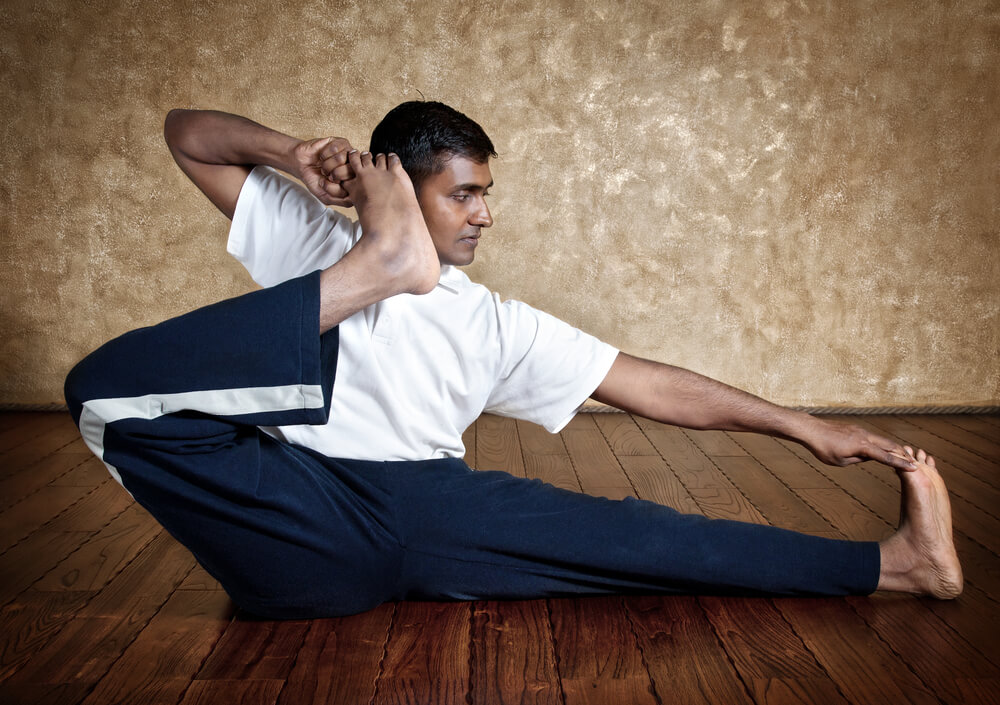
Akarna Dhanurasana Variations & Modifications
Akarna Dhanurasana, the Archer’s Pose, is one of the most challenging asanas, but with the correct variations and modifications, any beginner with injuries or advanced practitioners can do their practice.
Beginner Modifications of Akarna Dhanurasana
Ear Bow Pose, or Akarna Dhanurasana, can be done by intermediate yoga practitioners or advanced yoga practitioners. This yoga pose requires flexibility in the hamstrings, hips, and shoulders. As a beginner yoga practitioner, you may need to modify the pose according to your requirements to make it accessible and avoid strain. Here is a list of some important beginner-friendly modifications of Akarna Dhanurasana:
1. Beginners use a Strap for the foothold: Practitioners can sit with their legs extended. This pose is known as Dandasana. After this, they can loop a yoga strap around the ball of their right foot and hold the strap with their right hand. Then, keep your left hand on the floor for support or have your left big toe if possible. Now, you need to gently pull the right foot toward your right ear while keeping the spine straight. This modification of Akarna Dhanurasana helps if you can’t reach your toes yet.
2. Bend the Opposite Knee: Instead of keeping both legs straight, you need to bend the left knee and place the sole of your left foot on the floor. This will mainly reduce the strain on the hamstrings of the extended leg while you can work on lifting the other foot toward your ear.
3. Half Akarna Dhanurasana: Also known as the one-legged variation, this yoga pose requires focusing on one side at a time. You can hold one foot or use a strap and gently pull it toward your ear while keeping the other leg grounded. This pose helps you gradually build flexibility in your body.
4. Support Under the Sitting Bones: In this beginner modification, you need to sit on a folded blanket or yoga block to tilt your pelvis slightly forward. This will make it easier to maintain a straight spine for some time while working on the pose.
5. Practise Preparatory Poses First: You need to work on these poses to build flexibility in your body. Like Janu Sirsasana, known as the Head-to-Knee pose; Supta Padangusthasana, also called the reclining hand-to-big-toe pose; and Baddha Konasana, known as the butterfly pose.
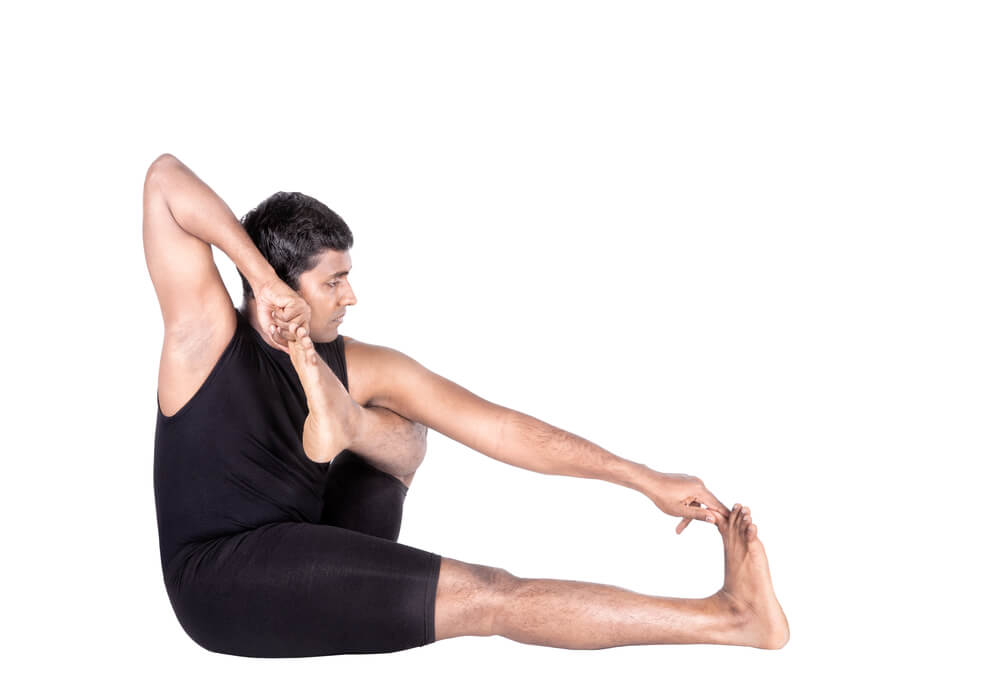
Also Read – Unlocking the Power of Baddha Konasana: Pose, Benefits and Variations
Advanced Variations Of Akarna Dhanurasana
Once you master the beginner modifications of Akarna Dhanurasana, you are ready to explore more profound variations to enhance your body’s strength and flexibility and balance your mental state. These advanced modifications will challenge the practitioner’s hip mobility, flexibility of the hamstrings, and core engagement of the complete body in yoga.
1. Full Akarna Dhanurasana: It is done with both legs extended. You have to start in Dandasana, known as Staff Pose. Now, grab your right big toe with your right hand or use a strap if needed. Then, lift the right leg toward your right ear while keeping the left leg straight and active. Hold for five breaths, then switch sides. The full Akarna Dhanurasana’s main challenge is maintaining straight legs without bending the knees.
2. Akarna Dhanurasana with Forward Fold: Also known as the Parsva Akarna Dhanurasana. In this pose, you need to, from the classic pose, exhale and fold forward over the extended leg. Then, bring your nose toward the shin of the straight leg while keeping the other foot near your ear. After this, deepen hamstring and hip flexibility while adding a spinal stretch.
3. Dynamic Akarna Dhanurasana: Also known as Bow & Arrow Motion, you must enter the pose by holding your right foot with your right hand. Imagine drawing a bow in your subconscious mind, then extending the left arm straight forward like you are holding an arrow. Now, while inhaling, open the chest and pull the foot closer to the ear while exhaling. You need to repeat 3–5 times before switching sides.
4. Akarna Dhanurasana to Eka Hasta Bhujasana: This is called a single-arm balance transition for easy understanding. Starting from Akarna Dhanurasana, where your right foot is near the right ear, place your right hand on the floor beside your hip. Then, press through the palm, engage your core, and lift your hips off the ground. After this, keep the left leg extended or bent for balance. These transitions help you balance your arm and build shoulder and core strength.
5. Bound Akarna Dhanurasana: Also known as Baddha Akarna Dhanurasana, in this, you need to perform the classic pose, then reach the opposite arm behind your back to bind. Understand with an example: right foot in right hand → left arm wraps behind to hold the right foot. Then, you need to increase shoulder opening and deepen the hip stretch.
6. Akarna Dhanurasana in Standing: This pose, also called Utthita Akarna Dhanurasana, requires standing in tadasana, lifting one leg, and holding the big toe. Then, extend the leg to the side and draw it up toward the ear. This will require intense balance, hip flexibility, and core strength.
7. Flying Akarna Dhanurasana: This pose of Akarna Dhanurasana is commonly called the Arm Balance Variation. In it, from sitting, lift both hips off the floor while holding one foot near the ear. Then, balance on your hands, similar to Lolasana or Tolasana. After this, advanced practitioners can attempt lifting both legs into a floating variation.
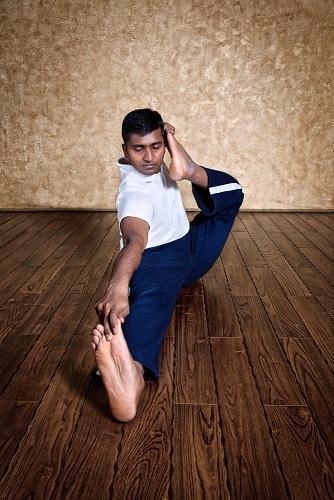
Standard Precautions & Contraindications for Akarna Dhanurasana (Archer’s Pose)
- Hamstring or Hip Injuries: The deep stretch during the Akarna Dhanurasana yoga asana can aggravate existing injuries or strains.
- Lower Back Pain or Sciatica: When a person is suffering from lower back pain, a seated stretch can worsen the issue if the core is not engaged or the back is rounded.
- Pregnancy: Due to the compression and twisting involved, the doctor doesn’t recommend Akarna Dhanurasana in pregnancy.
Conclusion
Akarna Dhanurasana is one of the most challenging yet rewarding poses. It enhances our flexibility, strength, and focus. Modifications make it easy for beginners and advanced practitioners. You can take its full benefits by practising mindfully and avoiding the most common mistakes. If you want to learn more complex yoga, like Akarna Dhanurasana (Archer’s Pose), you should learn it under the guidance of the best yoga teacher. You can mainly transform your devotion to yoga by becoming a yoga teacher, which is the best career opportunity. Enrol in the 200 Hour Yoga TTC in Rishikesh or 300-hour Yoga Teacher Training Course at Rishikul Yogshala, Rishikesh.



